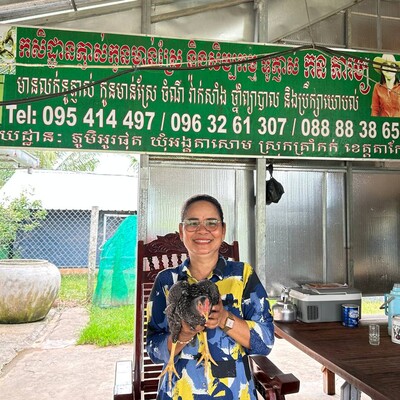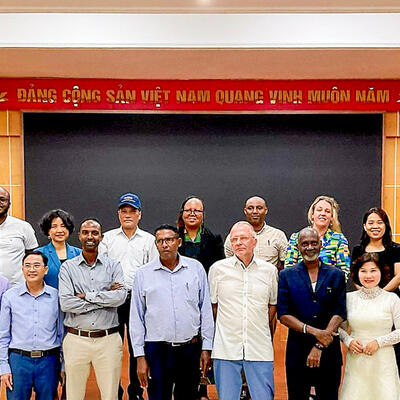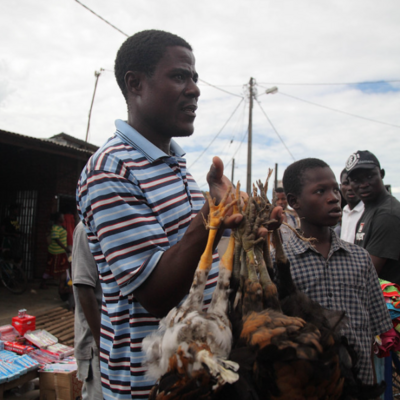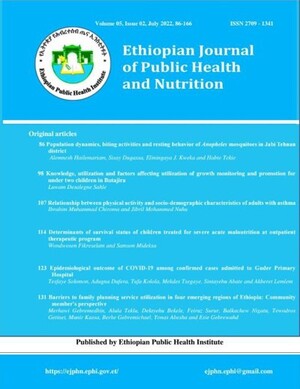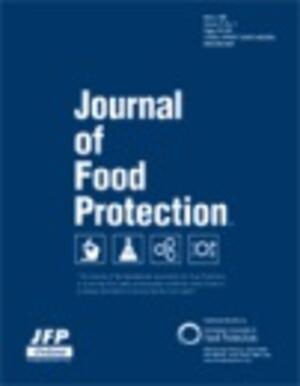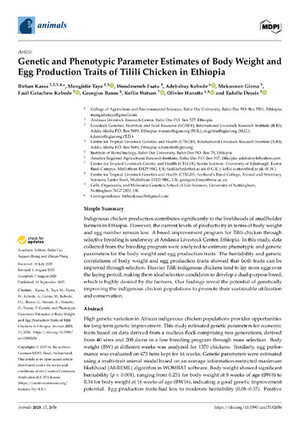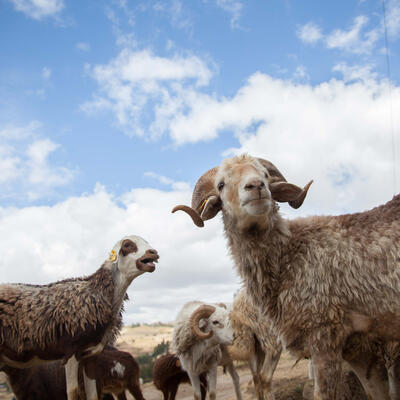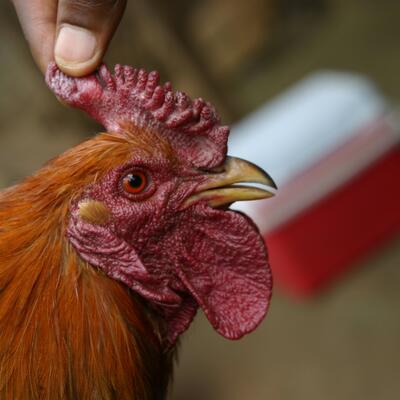
Voices on chicken genetics: Researching variations in chicken production in Ethiopia

Tekleyohannis Birihanu is the ACGG subnational coordinator in the Southern Nations and Nationalities Region in Ethiopia (photo credit: ILRI / Michael Tsegaye).
The Southern Nations and Nationalities Region (SNNPR) is one of the regions the African Chicken Genetics Gain (ACGG) project is being implemented in Ethiopia. Tekleyohannis Birihanu is the project’s subnational coordinator in the region. It is one of a series of portraits of key people in Africa Chicken Genetic Gains (ACGG).
Tell us about your background?
I have a bachelors degree in animal science, and a masters and PhD in animal nutrition. I have been working in research for more than 15 years, and I am now the animal research coordinator at the Agricultural Research Institute in the Southern Nations and Nationalities Region (SNNPR). I am also subnational coordinator (SNC) for the African Chicken Genetics Gain (ACGG) project in Ethiopia.
What is your specific role in the ACGG project?
As SNC in SNNPR, I am responsible for coordinating the stations we have in each of the five woredas (districts) in our region. My responsibilities cover overseeing data collection, overall project management and creating partnerships with stakeholders.
What do you think is the most interesting and engaging aspect of your job?
The ACGG project is an interesting one on the whole because it focuses on smallholder farms and empowering women. I find the participatory approach of the project very promising. Giving farmers new chicken breeds gives them the opportunity to evaluate each breed for themselves.
What are you currently working on?
We are currently distributing Kuroiler and Sasso breeds in the five woredas. In line with that, we are also engaged in on-farm testing and collecting data. We are observing variabilities in chicken productivity based on aspects of farm management, disease resistance and feeding. The farmers themselves have noticed differences between the two breeds. In addition to on-farm testing, we are also conducting, and participating in, innovation platforms. These have helped us to create partnerships with stakeholders.
What is the next piece of work you are focusing on?
We are currently undertaking training on human nutrition and gender. Once we have completed this, we will focus on incorporating human nutrition into our project activities.
What are some interesting research findings in ACGG in your region?
We have done baseline surveys and we are waiting on the findings. Although the results are not yet published, I believe they will clearly show the direction our chicken farming should follow. I think the nationally collected data will also help us understand the needs and sentiments of most of our farmers.
What are some of the most intriguing or innovative research question that you want to explore in ACGG?
I am observing variations in production. In general, this variation does not seem to be affected by geographic location as it can be seen to differ from woreda to woreda and sometimes from farmer to farmer within the same woreda. There are a few farmers who have almost all 25 chickens they received while some have around 20. I believe the variations are due to differing farm management practices, feeding, health of the chickens and the income level of the farmer. I am interested in doing research on the subject and finding out how each variable plays a role in production disparity.
Moreover, I want to do research on chicken production value chains and identify which areas need to be targeted to bring effective change.
What are you seeing as unique in your region?
I am not sure if these are elements unique to our region, but my first observation is based on gender distribution. In our area around 70% of the chicken farmers are women. This makes the ACGG’s objective of empowering women paramount.
The second issue I have observed is the effect of religion on consumption. If we compare our region to the northern regions, the SNNPR does not have as many fasting seasons as the north does. This means that communities in the south have fewer restrictions on consumption of chicken and chicken products. If resources allowed, the community in general would be happy to have chicken and eggs every day. However, what we see is that those with limited resources supplement their income by selling the eggs.
Why do you think the ACGG project matters and what gets you excited about it?
ACGG’s focus is on improving chicken breeds and this will have a great impact on the lives of the farmers. Farmers have been hatching local breeds for a long time. What they need now are breeds that they can hatch and manage by themselves. The project will fulfill the need of the farmer by providing them with manageable and genetically superior breeds.
In addition to the supply, ACGG will have a great impact on increasing the income of farmers. Since women are the ones mostly involved in chicken breeding in Africa, by focusing and working with them, the project will play a role in empowering them.
I am really excited about the participatory approach of the project. The participation involves all levels, from smallholder farmers to large-scale producers, and I believe it is an innovative approach to chicken production. The participation allows us to reach a common understanding with all stakeholders on accepting or rejecting an idea or technology. Farmers see and test the breeds for themselves and make their own decision on each type of breed.
What about the project causes concern for you and how could these be addressed?
There might be problems in distribution, getting the right chickens to farmers at the right time. We can solve the problem of distribution if we apply innovative methods. When we follow innovative approaches, capacity building becomes necessary. There should be training and skill development exercises provided at different levels, from researchers to field assistants to enumerators. We are using trained personnel to train other staffers who have missed training sessions and we are also working with other research institutions in capacity building.
What do you foresee as the lasting impact of ACGG?
I believe the ACGG project will provide farmers with the breed they want and this will have a lasting impact. Farmers, especially women, will benefit in terms of nutrition and income generation. Moreover, as a result of the project, the whole chicken value chain will profit from increased production. This in return will spur more interest and investment in the sector.
Chicken production is preferable to livestock farming when there is population increase because chicken and related products are easier to produce and deliver to consumers. Therefore, by focusing on improving the yield of chickens, the project can play a greater role in enhancing food security in Ethiopia.
Any other thoughts?
ACGG applies innovative approaches to various aspects of the project, from data collection to sharing our findings. The project has a great online presence and a lot of news and interesting articles get posted. However, in Ethiopia we are still using conventional methods and not taking advantage of these online tools. Most people in the country do not read blogs or have the skills to post one. I believe researchers and enumerators need orientation and training on making the best use of the tools available online.
We also need experience sharing sessions both at the national and regional level. Since the project is similarly being implemented in Nigeria and Tanzania, sharing our experiences and best practices will enable us all to have a broader perspective of our work.






